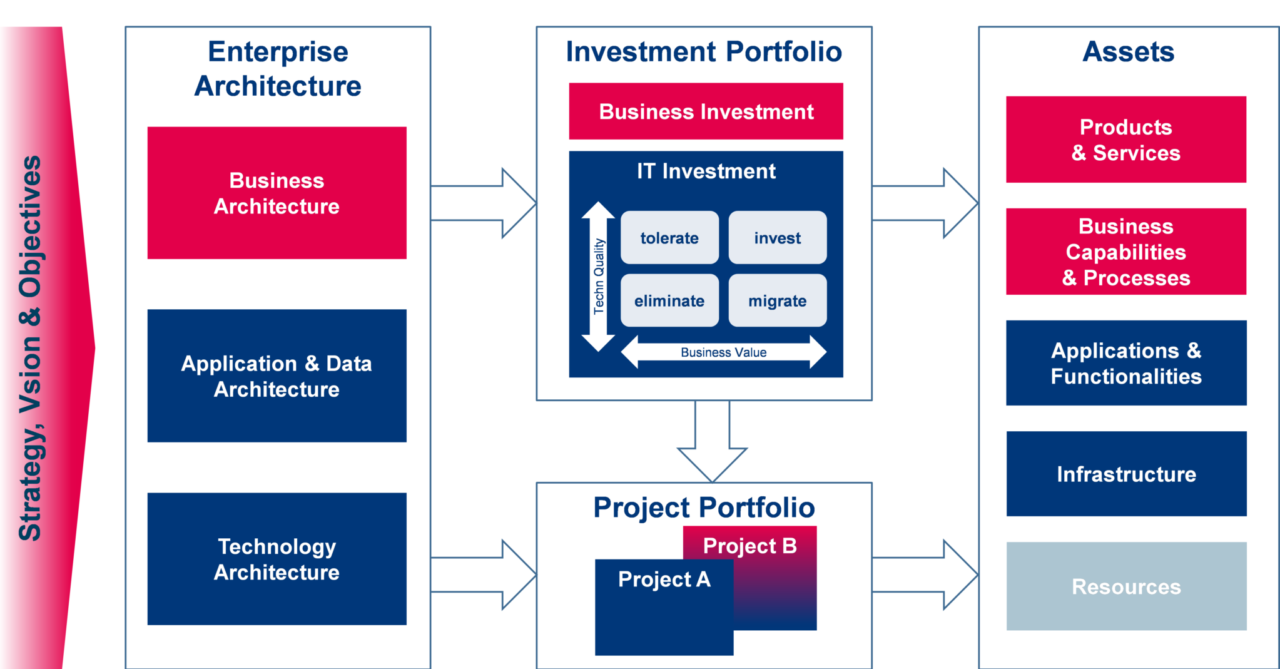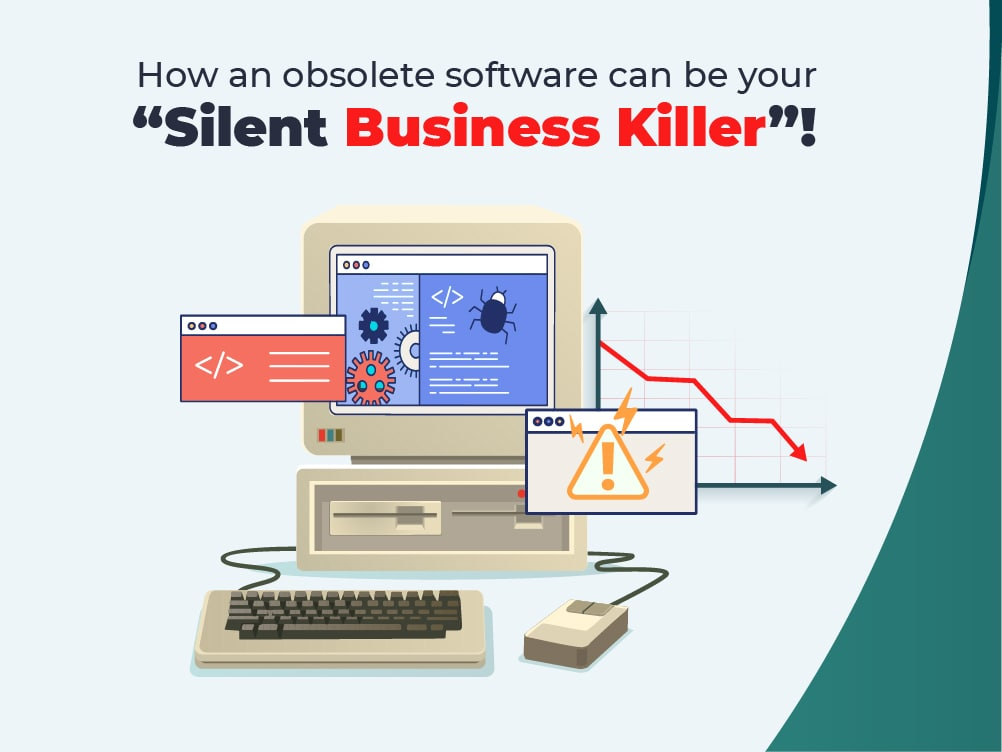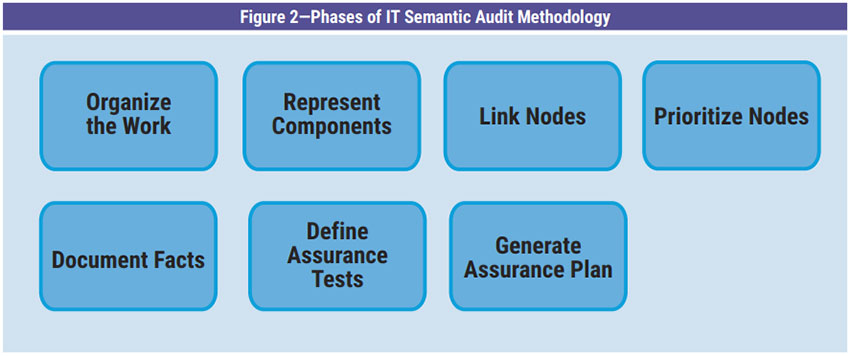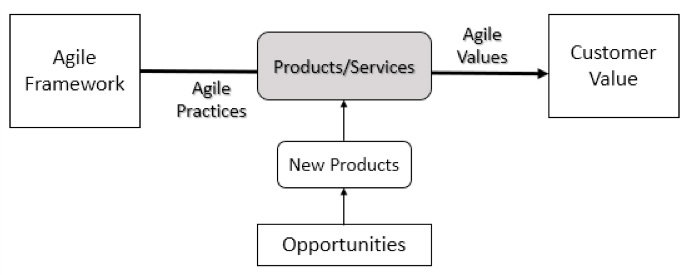6 Benefits of Application Portfolio Management
With each new merger, acquisition, process improvement, and technological advancement, the IT infrastructure of businesses grow to accommodate their evolving needs. Businesses seek creative solutions to keep up with the competition and this contributes to a rise in application administration expenses, a decrease in return on investment, extra complexity, and security risks due to an explosion in the number of applications being managed.
Application portfolio management (APM) plays a crucial role in assisting businesses in gaining a competitive advantage while minimizing operating expenses. Businesses need to understand all software they use otherwise, companies risk wasting money on unnecessary applications and technologies.
APM is an approach to managing a company's software applications comparable to a financial portfolio's management, aiming to maximize the ROI for each application. Finding solutions to problems with the application portfolio has been shown to impact bringing IT and the business closer together significantly.
Keep reading to learn what Application Portfolio Management (APM) is, and how it benefits businesses.
What is application portfolio management (APM)?

APM (Application portfolio management) is an IT management process that incorporates business analytics like cost-benefit analysis into IT initiatives. Application portfolio management is the practice of monitoring, categorizing, and evaluating a company's collection of software programs.
The application portfolio management (APM) concept emerged in the early 1990s but it wasn't until the turn of the millennium that organizations began to see the potential value of APM. During their Year 2K preparations, most businesses found that they had amassed programs that were unnecessary, expensive to operate, and added little to no value. Most applications were not organized in a way that made them easily searchable.
APM may monitor your application landscape in real-time, which can help you avoid making unnecessary purchases and save money. This way, business owners optimize their information technology resources and get the most out of their investments.
Application portfolio management in any business treats each application and piece of hardware as an asset. It assigns a value based on age, significance, number of users, etc. Investing in improvements or changes in the portfolio of assets must be rationalized in terms of expected returns and other quantifiable considerations under APM. With the help of APM, you can weed out inefficient applications, leaving just the high-quality, efficient ones that will enhance productivity and boost revenue.
Benefits of application portfolio management
Application performance management (APM) may help a business by initiating a rationalization process for its applications. It helps businesses compile a list of all their current software applications, evaluate their technical and commercial worth, and decide which ones to maintain, update, and eliminate.
The most crucial advantage of rationalization efforts is that they provide IT executives with a better grasp of their current landscapes, catalyzing improving their IT settings. There are many more advantages of APM, some of which are listed below.
1. Application/IT systems visibility and control

The emergence of apps has increased the complexity and redundancy experienced by IT departments. This growth has often resulted from mergers and acquisitions, globalization, or natural expansion. Because of this, businesses have little insight into their applications and have difficulties attempting to incorporate new resources into their existing infrastructure.
With application portfolio management software like Zluri, businesses can take stock of their applications from many angles including their lifetime, expenses, deployments, and the business functions they enable. IT portfolio managers may also connect applications to technologies and business capabilities to understand an IT asset's effect on the company and start undertaking what-if research to simplify applications. For organizations seeking deeper infrastructure visibility, exploring various CMDB tools can help track and manage configuration items more effectively within application portfolios.
Application owners may help speed up the application inventory process by updating their apps' profiles. Overall, this inventory will give improved insight and a deeper grasp of IT systems, allowing IT management to embrace new business initiatives quickly and grow their business.
2. Optimizes IT transformation to create enterprise-level apps

In addition to giving IT executives a comprehensive perspective, application portfolio management solutions may facilitate the transition of such systems. The IT department may benefit from APM in developing enterprise applications to replace the many standalone programs that prevent a holistic picture of a company's customers and other stakeholders.
This allows IT executives to model future IT initiatives based on application lifecycles and cost assumptions and then examine the results. An accurate image of the portfolio's application constraints makes it possible to foresee where new system development may revolutionize the company and provide efficiencies where none existed before.
To achieve this, they develop several initiatives based on various assumptions, such as whether or not to prolong or retire an application, and then combine these initiatives into many potential outcomes or scenarios. Finally, they may examine the effects on their IT infrastructure and evaluate other plans. When IT departments successfully plan and implement the IT transformation, they free up resources to expand and innovate existing businesses.
3. Maintains continuity and eliminates the patchwork problem

A robust application governance architecture is at the heart of application performance management (APM). It is a formal process that ensures application deployments are compatible with the current information technology architecture, fit the company's aims, and decrease the costs of managing and providing support for such installations. When a continuous governance mechanism is in place, one does not need to deal with unexpected events or address problems in an ad-hoc manner.
Additionally, a governance structure assists in monitoring all applications and tracking portfolio modifications from beginning to end.
4. Standardization and mitigation of technology outdatedness risks

The IT department is responsible for various potentially dangerous software technologies. Limiting the different types of technology used helps IT departments save money via economies of scale and helps development teams become more proficient in using those technologies.
Application portfolio management solutions may access third-party libraries to gather data on product lifecycles and EOL end-of-life dates, which can then be used to predict when technology will become obsolete. Some dashboards use this data to illustrate obsolete technology's impact on software. Technology portfolio managers will determine whether the evaluated technologies meet the organization's requirements. Looking at the portfolio, you may see the software built on outdated platforms that might benefit from being migrated to more modern alternatives.
Companies may save money by converting to fewer technologies made more accessible by the standards defined by technology portfolio managers. Conversion also contributes to a more sustainable future for the planet.
5. Allows easier IT audits, compliance checks, and IT outsourcing

A corporation should thoroughly audit its present IT system, including removing unused applications, before outsourcing any part of its IT. So, assessing the situation is essential before deciding which applications to keep in-house and which to farm out.
Another advantage is that IT audits and certifications are simplified. In some instances, government agencies and consulting firms may insist that businesses implement effective IT asset monitoring practices. Enterprises might benefit from using an application portfolio management technique to better support the IT road plan or minimize capital allocation to cover IT risk.
6. Application optimization, cost cutting, and IT agility

The application portfolio management solutions often feature several dashboards that can be used to get an overview of the portfolio's current status. There are many dashboards, but one example provides information on when apps will be phased out or replaced by a different version. Other dashboards, such as those showing how data flows across apps, provide insights into the prospect of deleting an application and sharing data with others.
A business viewpoint gives an application portfolio management technique its true power. IT executives have a comprehensive grasp of how apps support business capabilities. Consequently, they know which applications are vital to the company. Application Portfolio Management systems also feature surveys allowing business users to express their perspectives on their apps.
Not only do these dashboards indicate possible anomalies, but also they assist in better planning the IT change. With these dashboards, IT managers can better understand the business value of their applications, allowing them to optimize their utilization, save expenses, and boost IT flexibility.
Summarizing the benefits of APM
- Benefits IT departments by lowering the price of running the infrastructure and boosting the effectiveness of the services it provides
- Businesses become more streamlined and efficient, freeing resources for the most strategically important initiatives
- Improves communication with service providers and helps establish clear SLAs (Service level agreements)
- With the help of APM, business leaders can keep tabs on expenditures and cut down where it makes sense
- The enhanced ability to communicate across departments ultimately leads to more efficient operations
- APM can identify duplicate or unnecessary programs and it guarantees efficient use of available resources
- Offers a structured method for calculating expenses and calculating company value for informed decision-making
- Saves money that may be directed toward new projects identified throughout the application review process
- When applications are consolidated into a portfolio, it decreases the cost of maintenance since there is less variety to manage
- Training and support costs may be decreased if the number of applications is reduced as a result of the rationalization process
Wrapping up
There is a rising need for portfolio reduction to maintain it aligned with business needs as applications are added through mergers and acquisitions and new development requirements.
The use of an APM tool is beneficial to help you close any gaps in communication between stakeholders, leading to a more streamlined IT environments eliminating unnecessary applications, decreasing IT risk, increasing investment value, and managing the application lifecycle to meet your business objectives.
Author Bio:
Surya Ranjan Pandita is a content marketer. He is always on the lookout for new optimization strategies and loves to create actionable content. Feel free to ping him on LinkedIn.







